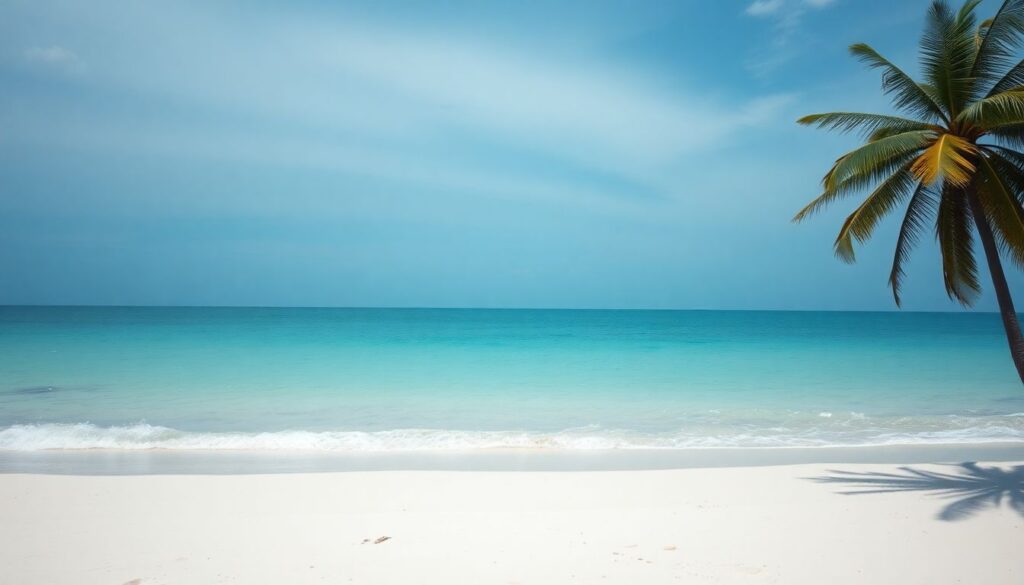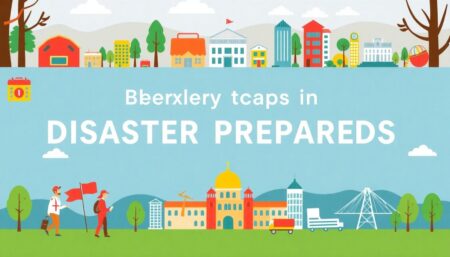Welcome to this reflective journey as we mark the 20th anniversary of one of the most devastating natural disasters in modern history. Join us as we remember, learn, and look forward to better preparedness and understanding of the forces of nature.
A retrospective on the 2004 earthquake and tsunami that changed the world forever.
Imagine a shoreline kissed by the sun, where the ocean’s breath is warm and gentle against your skin. The beach stretches out lazily, its white sands caressed by crystal waters that shimmer in countless shades of blue. Palm trees sway in a dance dictated by the tropical breeze, their leaves whispering secrets of the island’s tranquility. Children’s laughter echoes from afar, blending with the peaceful symphony of nature, as the scent of frangipani flowers wafts through the air, creating an intoxicating sensation of paradise.
The tide is low, revealing a tapestry of marine life beneath the shallow waters. Vibrant fish dart among the corals, while starfish lounge on the sandy bed, awaiting the ocean’s return. The sea is calm, almost unnaturally so, as if the world has paused to take a deep breath. The line between the sea and sky is barely discernible, a delicate brushstroke where the endless blues meet. It’s a scene that embodies the essence of serenity, a testament to the beauty of Southeast Asia’s coastal havens.
Yet, there’s something almost imperceptible, a subtle disruption in the perfect canvas of the horizon. A slight, almost invisible line, like a distant mirage, hints at a force stirring beneath the surface. It’s the calm before the storm, the quiet before the roar. The ocean holds its breath, and time seems to suspend, as the beach remains blissfully unaware of the approaching tsunami, a stark reminder of nature’s unpredictable duality.

The Day the Earth Shook
On December 26, 2004, the world awoke to a catastrophe of unprecedented scale. At 00:58:53 UTC, a massive underwater earthquake struck off the coast of Sumatra, Indonesia. With a magnitude of 9.1-9.3 on the Richter scale, it was the third-largest earthquake ever recorded. The quake occurred as the Indian Plate was forced beneath the Burma Plate, displacing an estimated 30 kilometers of the seafloor and triggering a series of devastating tsunamis throughout the Indian Ocean.
The immediate impact was cataclysmic. The tsunamis, with waves reaching up to 30 meters high, slammed into the coastlines of 14 countries, from Indonesia to as far as South Africa. Entire communities were swept away in a matter of moments. Eyewitness accounts painted a harrowing picture:
- “I saw the wave coming in, and I started screaming for everyone to get out,” recalled Ravi Kumar, a survivor from Sri Lanka. “But it was too late. The water took everything.”
- “The wave was like a monster, swallowing everything in its path,” said Cut Nurul, a resident of Banda Aceh, Indonesia. “I saw people running, screaming, but the wave just washed them away.”
The initial death toll estimates were staggering, with at least 230,000 people confirmed dead and over 1.7 million displaced. The sheer scale of the disaster made it difficult to comprehend the full extent of the damage.
The global reaction was swift and profound. News outlets around the world broadcast the horrifying scenes of destruction, prompting an outpouring of support. Governments, international organizations, and individuals pledged aid and assistance. Within days, one of the largest humanitarian responses in history was underway:
- The United Nations launched a massive relief effort, coordinating with numerous NGOs to provide food, water, and medical supplies.
- Countries like the United States, Australia, and Japan deployed military assets to assist in search and rescue operations.
- Celebrities and public figures used their platforms to raise awareness and funds for the victims.
The 2004 Indian Ocean tsunami served as a grim reminder of nature’s destructive power and the importance of global cooperation in the face of such calamities.

The Aftermath and Global Response
The tsunami, a colossal force of nature, left an unprecedented trail of devastation in its wake. Coastal communities were obliterated, leaving behind a post-apocalyptic landscape of flattened buildings, uprooted trees, and debris-strewn shorelines. The sheer power of the wave caused extensive flooding, damaged infrastructure, and claimed countless lives. Survivors, emerging from the wreckage, found themselves in a starkly altered reality, grappling with the loss of loved ones, homes, and livelihoods.
The struggle of survivors in the aftermath was a daunting journey filled with physical, emotional, and psychological challenges. Basic necessities like food, water, and shelter became luxuries, as people were left to cope with the harsh conditions. The fear of disease outbreaks, the trauma of loss, and the uncertainty of the future added to the survivors’ plight. Yet, amidst the despair, resilience bloomed. Communities came together, supporting each other through shared grief and collective determination to rebuild.
The global humanitarian response to the tsunami was swift and overwhelming. Nations worldwide rallied to provide aid, sending teams of medical professionals, search and rescue personnel, and relief supplies. International organizations, NGOs, and charities worked tirelessly to coordinate efforts, ensuring that help reached those in need. The outpouring of support was a testament to global solidarity, with people from all corners of the world contributing to the relief efforts.
However, the relief efforts were not without their challenges. Key among them were:
- Logistical hurdles: Damaged infrastructure, remote locations, and the sheer scale of the disaster made it difficult to distribute aid efficiently.
- Coordination issues: With multiple organizations involved, there were overlaps and gaps in service provision, leading to inefficiencies.
- Cultural sensitivity: Ensuring that aid was appropriate and respectful to local cultures was a learning curve for some organizations.
Lessons learned from the relief efforts highlighted the importance of:
- Preparedness: Investing in early warning systems, evacuation plans, and community education can mitigate the impact of future disasters.
- Collaboration: A unified command structure and better communication between agencies can streamline relief efforts.
- Local empowerment: Involving local communities in decision-making processes can ensure that aid is more effective and sustainable.

Science Behind the Disaster
The geological reasons behind earthquakes and tsunamis are intricately linked to the dynamics of the Earth’s crust. Earthquakes typically occur along fault lines, where tectonic plates meet and move against each other. When these plates suddenly slip past one another, a tremendous amount of energy is released, causing the ground to shake. Tsunamis, on the other hand, are often triggered by underwater earthquakes, known as submarine earthquakes. These earthquakes can displace large volumes of water, creating a series of waves that can travel vast distances and cause significant destruction when they reach the shore.
The seismic activity in regions prone to earthquakes and tsunamis is often a result of the constant movement of tectonic plates. Areas like the Pacific Ring of Fire are notorious for their high levels of seismic activity. This region, which stretches from the southern tip of South America, up along the coast of North America, across the Bering Strait, and down through Japan and Southeast Asia, is home to some of the world’s most active volcanoes and frequent earthquakes. The convergence, divergence, and transform boundaries of the tectonic plates in this region create a hotbed of geological activity.
To understand the likelihood of similar events in the future, it’s essential to look at the historical data and the current seismic activity. Here are some key points:
- Historical Data: Regions with a history of frequent earthquakes and tsunamis are likely to experience similar events in the future. For instance, Japan has a long history of seismic activity, making it a high-risk area.
- Current Seismic Activity: Monitoring the current movement of tectonic plates and the frequency of minor earthquakes can provide insights into the likelihood of major events. Advanced technologies like GPS and seismometers help scientists track these movements.
- Prediction Models: Scientists use complex models to predict the probability of future earthquakes and tsunamis. While these models are not foolproof, they can provide valuable information for preparedness and risk assessment.
In conclusion, the geological reasons behind earthquakes and tsunamis are deeply rooted in the Earth’s tectonic activity. The seismic activity in regions like the Pacific Ring of Fire indicates a high likelihood of similar events in the future. However, with advancements in technology and predictive modeling, we can better prepare for these natural disasters and mitigate their impact on communities.

Preparedness and the Future
The catastrophic 2004 Indian Ocean tsunami served as a grim wake-up call, highlighting the urgent need for robust early warning systems and comprehensive disaster preparedness initiatives. With waves reaching up to 30 meters high and claiming over 230,000 lives across 14 countries, it became evident that existing systems were woefully inadequate.
Post-2004, significant advancements have been made to fortify tsunami warning systems. The Indian Ocean Tsunami Warning and Mitigation System (IOTWMS) was established, equipped with state-of-the-art technology like deep-ocean buoys, seismometers, and GPS stations to monitor seismic activity. Real-time data transmission and improved modeling techniques have enhanced accuracy and timeliness in issuing alerts. Additionally, regional cooperation has amplified, fostering information sharing and joint exercises among at-risk countries.
Disaster preparedness initiatives have also seen a considerable boost. Communities are now better informed through educational programs, evacuation drills, and public awareness campaigns. Tsunami hazard maps, warning signs, and evacuation routes have become common fixtures in coastal cities. Moreover, the travel and tourism industry has been integrated into preparedness efforts, with hotels and resorts implementing tsunami evacuation plans.
The United Nations, through its Office for Disaster Risk Reduction (UNDRR), has set an ambitious goal to make all at-risk communities ‘tsunami ready’ by 2030. This initiative emphasizes:
- Enhancing education and awareness
- Implementing effective warning systems
- Fostering resilient infrastructure
- Strengthening response capacities
Achieving this goal requires sustained political commitment, multi-stakeholder partnerships, and innovative approaches to reduce tsunami risk and save lives.
FAQ
What caused the 2004 Indian Ocean tsunami?
How many people were affected by the disaster?
What were some of the challenges faced during the relief efforts?
- Overwhelming scope of the disaster
- Delayed emergency response
- Isolation and disease among survivors
- Coordination among international aid agencies
What has been done to improve tsunami preparedness since 2004?
- Establishment and upgrade of tsunami warning systems
- Deployment of buoys to detect sea level changes
- Installation of sirens in coastal areas
- Inclusion of tsunami education in preparedness curriculum
How can individuals stay alert and prepared for a tsunami?
- Be aware of your surroundings
- Understand potential hazards
- Recognize natural warning signs
- Know the evacuation routes to a safe place









